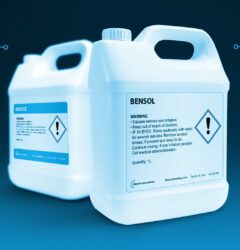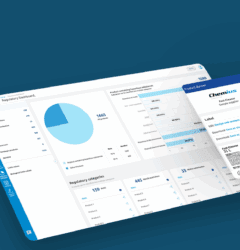21 Oct

In the rapidly evolving landscape of chemical compliance, staying informed about Poison Centre Notifications (PCN) and Unique Formula Identifiers (UFI) is essential. These regulations impact companies involved in paints, printing inks, coatings, aerosols, raw materials, automotive products, and chemical distribution, underscoring the importance of proactive compliance strategies as we approach 2025.
This guide provides detailed insights into PCN and UFI obligations, offering actionable guidance on leveraging advanced SDS Authoring Software for seamless compliance.
Understanding PCN and UFI Regulations
What is a Poison Centre Notification (PCN)?
PCN involves submitting comprehensive product information about hazardous mixtures to appointed poison centers, enabling prompt and effective emergency responses during incidents.
What is a Unique Formula Identifier (UFI)?
A UFI is a 16-character alphanumeric code required on product labels, linking the product directly to its submitted poison center information.
Why PCN and UFI Compliance Matters
Improved Emergency Response
Accurate PCN and UFI submissions facilitate rapid response during chemical exposure incidents, safeguarding health and safety.
Regulatory Compliance
PCN and UFI adherence is mandated under the EU’s Classification, Labelling, and Packaging (CLP) regulations, with stringent penalties for non-compliance.
Enhanced Market Trust
Compliance demonstrates transparency and responsibility, building credibility and trust among customers and regulators.
Key Requirements for 2025

Mandatory UFI Inclusion on Product Labels
From 2025 onward, all hazardous mixtures placed on the EU market must clearly display their UFI on labels, complementing the PCN submissions.
Comprehensive PCN Data Submission
Companies must ensure accurate, timely submission of detailed product formulations, hazard classifications, and emergency information to national poison centers through ECHA’s harmonized submission platform.
Regular Updates
Companies are required to update PCN submissions whenever there are changes to formulation, hazards, or relevant product details.
Leveraging SDS Authoring Software for PCN and UFI
Advanced SDS Authoring Software Chemius simplifies PCN and UFI compliance through:
Automated Data Management
Efficiently compile, validate, and submit complex PCN data, reducing manual effort and errors.
Real-time UFI Generation
Instantly generate and manage unique UFI codes, ensuring timely and accurate product labeling.
Regulatory Integration
Automated software updates ensure continuous compliance with evolving PCN and CLP requirements.
Practical Steps for Ensuring PCN and UFI Compliance

- Accurate Data Collection: Ensure product formulations and classifications are precise and thoroughly documented.
- Software Integration: Implement advanced SDS software that automates PCN and UFI processes.
- Regular Training: Provide continuous training for compliance teams to stay updated on evolving regulations.
- Periodic Reviews: Regularly review and update PCN submissions and UFI labels to reflect changes accurately.
Case Study: Streamlining PCN and UFI Compliance
A global aerosol manufacturer faced significant compliance challenges with manual PCN and UFI management. Adopting integrated SDS Authoring Software enabled seamless compliance, significantly reducing errors and improving operational efficiency.

Impact:
- 70% reduction in manual data handling errors
- 50% faster submission times
- Enhanced regulatory confidence and market reputation
How easy is to make a PCN notification inside of Chemius you can see in this video below.
FAQs: Demystifying PCN and UFI Requirements
1. What happens if UFI labels are incorrect or missing? Incorrect or missing UFIs can result in severe regulatory fines and market withdrawal of products.
2. Can UFIs be reused across different products? No, each unique mixture requires its own UFI, even if differences between mixtures are minor.
3. How often should PCN submissions be updated? Updates must occur promptly whenever there are changes to product formulation, hazards, or emergency information.
Comparison: Manual vs. Automated PCN/UFI Management

Proactive adoption of integrated SDS Authoring Software for PCN and UFI compliance is a strategic advantage, enabling companies to manage compliance effectively while supporting business agility and growth.
What Companies Must Do?
• Maintain valid PCN submissions: All hazardous mixtures placed on the EU market must already be notified in ECHA’s harmonized system since 2025.
• Ensure UFI presence: UFI codes must remain visible and linked to accurate formulations on labels and SDSs.
• Prepare for inspections: Enforcement starting in 2026 will heavily target missing or incorrect notifications and UFIs.
• Plan for 2027 adjustments: New obligations under the CLP revision, including additional Article 45 requirements, will begin applying from January 2027.
In short, while the 2025 deadline ended the transition period, 2026 marks the beginning of active enforcement and transitional preparation for the next wave of CLP and UFI/PCN rule enhancements entering into force in early 2027.
Prepare yourself for 2026
Effective management of PCN and UFI compliance is critical for chemical companies seeking to mitigate risks, ensure safety, and maintain market trust. Leveraging advanced SDS Authoring Software streamlines compliance, reduces operational complexity, and positions your company advantageously for regulatory success in 2025 and beyond.

Ready to enhance your PCN and UFI compliance strategies?
Contact us today for tailored solutions that ensure your regulatory readiness and operational efficiency.
support@chemius.net


